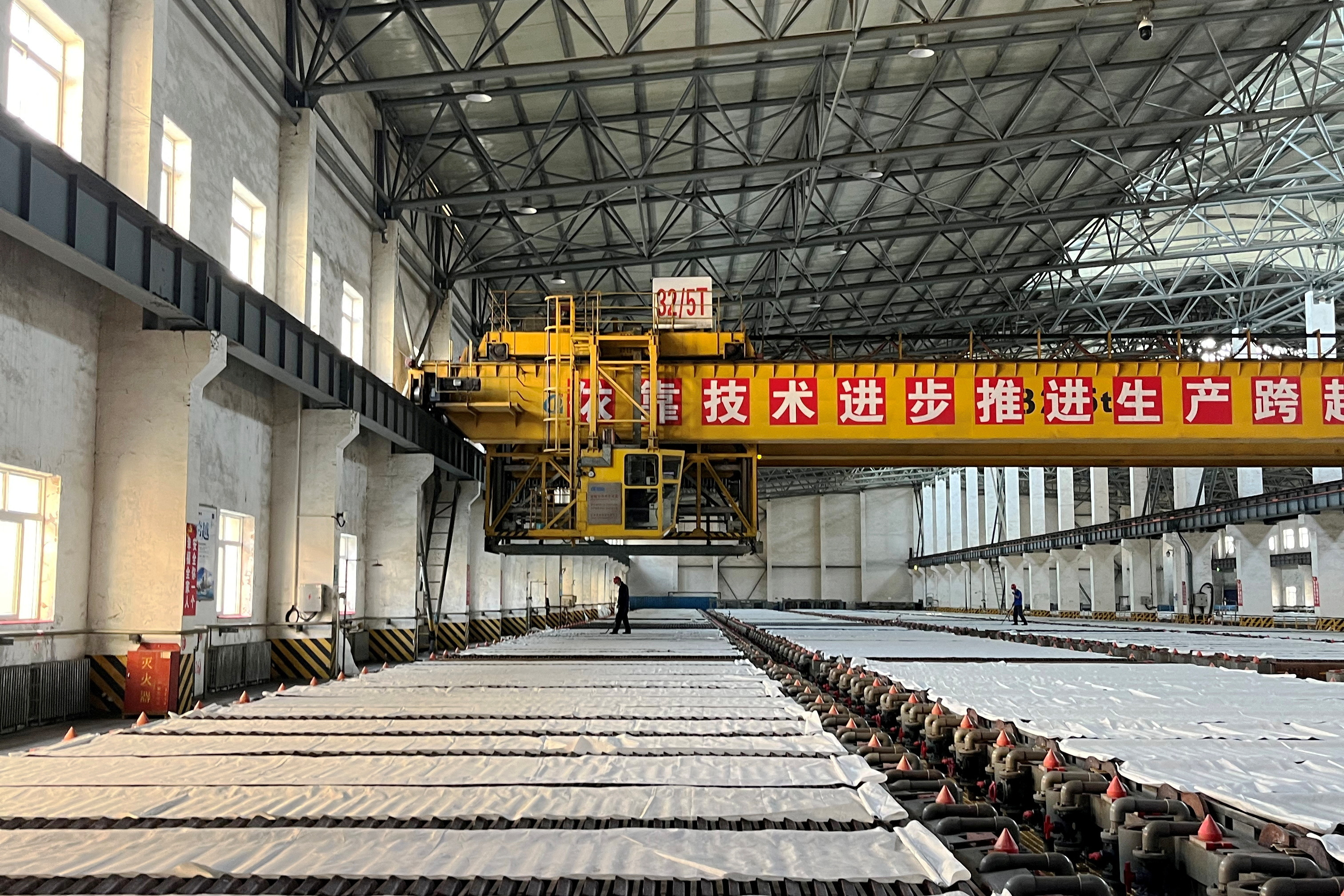By Pratima Desai
April 8, 2024

Employees work at a copper smelter in Yantai, Shandong province, China April 26, 2023. REUTERS/Siyi Liu/
LAUSANNE, Switzerland, April 8 (Reuters) - Copper demand linked to artificial intelligence and data centres could add up to one million metric tons by 2030 and exacerbate supply deficits towards the end of the decade, commodity trader Trafigura said.
The energy transition, which includes electric vehicles and renewable energy technologies, is expected to fuel a surge in copper consumption over the coming years as the world moves towards eliminating carbon emissions.
"If you look at the demand that is coming from data centers and related to that from AI, that growth has suddenly exploded," said Saad Rahim, chief economist at Switzerland-based Trafigura, at the Financial Times Global Commodities Summit in Lausanne.
The one million tons is "on top of what we have as four to five million ton deficit gap by 2030 anyway", Rahim said. "That's not something that anyone has actually factored into a lot of these supply and demand balances."
Rahim did not say what global copper demand would be in 2030.
Global copper demand is expected at around 26 million tons this year, while a Reuters survey, opens new tab published in January showed expectations are for the copper market deficit rising to above 100,000 tons in 2025 from shortages of 35,000 tons this year.

Employees work at a copper smelter in Yantai, Shandong province, China April 26, 2023. REUTERS/Siyi Liu/
LAUSANNE, Switzerland, April 8 (Reuters) - Copper demand linked to artificial intelligence and data centres could add up to one million metric tons by 2030 and exacerbate supply deficits towards the end of the decade, commodity trader Trafigura said.
The energy transition, which includes electric vehicles and renewable energy technologies, is expected to fuel a surge in copper consumption over the coming years as the world moves towards eliminating carbon emissions.
"If you look at the demand that is coming from data centers and related to that from AI, that growth has suddenly exploded," said Saad Rahim, chief economist at Switzerland-based Trafigura, at the Financial Times Global Commodities Summit in Lausanne.
The one million tons is "on top of what we have as four to five million ton deficit gap by 2030 anyway", Rahim said. "That's not something that anyone has actually factored into a lot of these supply and demand balances."
Rahim did not say what global copper demand would be in 2030.
Global copper demand is expected at around 26 million tons this year, while a Reuters survey, opens new tab published in January showed expectations are for the copper market deficit rising to above 100,000 tons in 2025 from shortages of 35,000 tons this year.
China is the world's largest producer and consumer of copper. It also dominates global supplies of many other industrial metals needed for the energy transition: a source of worry for western leaders with net zero targets to meet.
"My fear is that escalation of geopolitical tensions is going to slow down the green transition," said Beata Javorcik, chief economist at the European Bank for Reconstruction and Development.
"China controls a large share of production of critical raw materials while the West and its allies control a relatively small share in some of those critical raw materials."
Javorcik mentioned rare earths and graphite needed for electric vehicle batteries as materials whose production is dominated by China.
Reporting by Pratima Desai; editing by Devika Syamnath
No comments:
Post a Comment